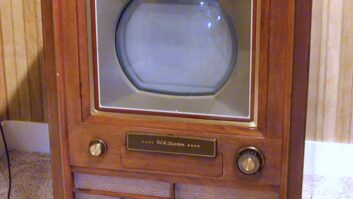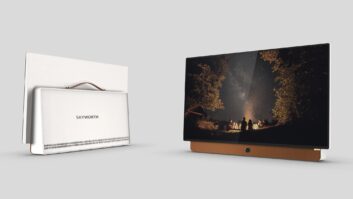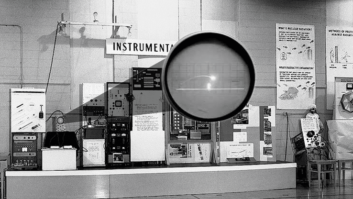Washington, D.C. – Looking to ‘foster the transition to digital TV’ while safeguarding illicit redistribution of over-the-air digital TV, the Federal Communications Commission (FCC) adopted the long-awaited and controversial anti-piracy mechanism called the ‘broadcast flag.’
The three Republican commissioners voted to approve the Report and Order on the broadcast flag, while the two Democrats on the commission approved some portions of the order and rejected others.
The ‘broadcast flag’ is a digital code that can be embedded into a digital-broadcasting stream. It signals DTV reception equipment to limit the indiscriminate redistribution of digital broadcast content.
Yielding to the desires of many consumer electronics manufacturers, the order was not mandated to take effect until July 1, 2005, giving TV makers the chance to adjust production cycles. It targets only products that are capable of receiving DTV signals over-the-air, and excludes digital devices that lack DTV tuners, such as digital VCRs, DVD players and personal computers.
Additionally, all existing televisions, VCRs, DVD players and related equipment will remain fully functional under the adopted order.
The rules do not affect the consumers’ ability to make digital copies, and is intended ‘only to prevent mass distribution over the Internet,’ according to an FCC statement. It also will not require consumers to purchase any new equipment.
However, the order left the use of the broadcast flag to the complete discretion of broadcasters, and did not restrict its use on news and public affairs programming, as some consumer and free-speech advocacy groups had demanded.
‘Today’s decision strikes a careful balance between content protection and technology innovation in order to promote consumer interests,’ said FCC chairman Michael Powell.
He added that the absence of content protection could cause high value programming to migrate from free broadcast television to more secure subscription platforms such as cable and satellite TV service. He said he expects the broadcast flag will encourage availability of ‘high-value content’ on broadcast television, and avoid slowing the DTV transition.
Commissioner Michael Copps said he dissented on the portion of order that ‘doesn’t preclude the use of the flag for news or for content that’s already in the public domain,’ adding that even ‘broadcasts of government meetings could be locked behind the flag.’
Gary Shapiro, CEA president, applauded the FCC for implementing a workable timetable.
‘Through this act, the FCC has recognized the real-world product development and manufacturing cycles of digital television (DTV) product manufacturers,’ Shapiro said. ‘We continue to urge the Commission and broadcasters to implement the flag in a manner that respects and protects consumers’ fair use rights, and we believe some special status should have been given to news and public affairs programming.
Edward Fritts, NAB president, hailed the ruling as ‘another advance in the digital transition and ensures that consumers continue receiving the very best in free, over-the-air television programming. It is equally important that the Commission recognized that news and public affairs aired by local stations receive the same retransmission protection as other programming.’
Robert Sachs, National Cable & Telecommunications president, applauded the ruling.
‘The FCC’s action represents another significant step in moving the digital transition forward. The cable industry has consistently supported the goal of preventing the unauthorized redistribution of free, over-the-air broadcast programming over the Internet.
The FCC established an interim policy that allows proponents of a particular content protection or recording technology to certify to the FCC that those systems are can effectuate the intent of the broadcast flag, subject to public notice and objection. This interim policy will enable the FCC to certify multiple compliant technologies in time for manufacturers to include flag technology in television receivers by 2005, the commission said.
The FCC scheduled a further notice of proposed rulemaking to gather comment on a permanent process for the approval of content protection technologies.













